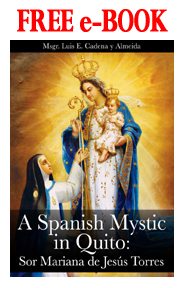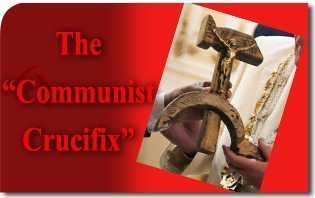
On analyzing current events, a Catholic journalist should follow the directive of Pope Leo XIII to scholars studying Church history: “Say nothing false, hold back nothing true”1 as “God has no need of our lies (Job 13.7).”2
A “Communist Crucifix”
We should therefore bear in mind the words of the renowned Pontiff as we analyze the highly symbolic act by Pope Francis during his recent trip to Bolivia. He agreed to be “decorated” by socialist President Evo Morales with a medallion depicting Our Lord Crucified upon the communist symbol of the hammer and sickle. On the occasion, he also received the same depiction in the form of a sculpture (photos here, here, and here; video here).
10 Razones para Rechazar el Socialismo
Many people, such as for example Fr. James V. Schall, S.J., and media outlets have called it a “Communist Crucifix.”3
A “Marxist Decoration” Created for the Pope
It is well to note that the bestowal of the above-mentioned medallion was no surprise. Indeed, Bolivia’s newspapers reported in advance that the country’s Legislature had approved the creation of a decoration in memory of Fr. Luis Espinal Camps, S.J. — who had sculpted Christ upon a hammer and sickle — to be delivered to Pope Francis during his visit.
 Learn All About the Prophecies of Our Lady of Good Success About Our Times
Learn All About the Prophecies of Our Lady of Good Success About Our Times
In the Pontiff’s surprised look and in the words he was said to have uttered on the occasion (“eso no esta bien”, “this is not okay”) some people wished to see a certain rejection of the socialist dictator’s offer. But that was denied by the Vatican spokesman, Fr. Lombardi, and also implicitly by Pope Francis when responding to journalists on his flight back to Rome.
The Pope Did Not Feel Offended
Journalist Aura Vistas Miguel asked: “Your Holiness, what did you think when you saw the hammer and sickle with the Christ on it?” The Pontiff answered he did not know that Fr. Luis Espinal had made that sculpture of the Crucified upon a hammer and sickle and he was surprised to learn about it. But he commented that he knew well that the priest was an adherent of Marxist liberation theology.
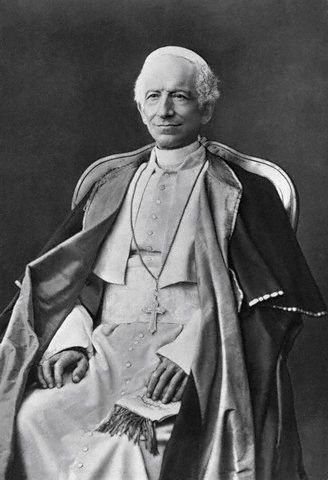
“Espinal,” the Pope said, “was an enthusiast of this Marxist analysis of the reality, but also of theology using Marxism [our emphasis]” and that is why “he came up with this art piece.” However, Francis believes that this priest “was a special person, with so much human geniality, who fought in good faith [our emphasis].” And he explained, “One could categorize it [the crucifix] as a kind of protest art” so that, he added, “for me it wasn’t an offense [our emphasis].”
A Peculiar Example of Protest Art
Francis explained that “protest art” “in some cases can be offensive” but went on to qualify it by repeating “in some cases [our emphasis].”4 Nevertheless, he did not clarify if in this case the gift was offensive.
To better illustrate what “protest art” is, Pope Bergoglio mentioned a sculptor from Buenos Aires who was “a good sculptor, creative,” and whose art “was protest art.” He gave as an example of this “creativity”: “a crucified Christ on a bomber that was falling down.” With that work, he sought to criticize “Christianity allied with imperialism, represented by the bomber [our emphasis].”
The pro-communist artist he referred to is Léon Ferrari. A photo of the work to which the Pope alludes can be seen in Ferrari’s obituary published by the The New York Times in 2013. According to this paper, Ferrari employed his “art” “against war, government and religion [our emphasis].” The report also says that “Mr. Ferrari started a club for ‘the impious, heretics, apostates, blasphemous, atheists, pagans, agnostics and infidels’ [our emphasis].”
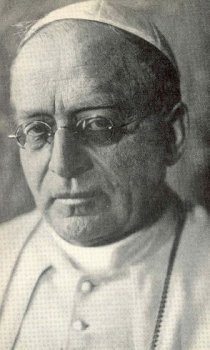
Pray the Rosary to Stop ISIS — Sign Here
Medallion Placed at the Feet of Our Lady
The Pope placed the hammer and sickle medallion at the feet of a statue of Our Lady of Copacabana, patroness of Bolivia, and took the sculpted one with him to Rome.
Teaching Through Symbolic Gestures
Having summarily described the facts, and with due respect to the Pope, it is necessary to analyze them according to the advice of Pope Leo XIII, making use of the freedom of the children of God (Rom. 8:21).5
It is well to emphasize that Pope Francis exercises his Ordinary Magisterium above all through symbolic gestures.6 Even Vaticanist John L. Allen, who is not a conservative, expressed his difficulty in attempting to analyze the teaching of the present Pontiff:
“Parsing the words of Pope Francis is a notoriously hazardous undertaking, as he tends sometimes to say things that seem almost deliberately open to multiple interpretations — remember “Who am I to judge?” — and then play his cards close to the vest in terms of what policy implications, if any, may ensue.”
What the Popes Have to Say About Socialism
A Confused Explanation
Among Catholics, the disconcertment caused by the Pope’s symbolic gesture of accepting the communist crucifix medallion and sculpture was made even worse by the explanations he gave journalists implying that sacrilegious irreverence toward the Savior loses its seriousness when it is a case of protest art:
“Under this kind of hermeneutic, I understand this work. For me it wasn’t an offense, but I had to apply this hermeneutic, and I am telling you this so that there aren’t any misguided opinions [our emphasis].”
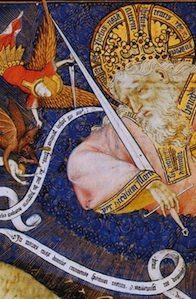
Sacrilegious Irreverence
Catholics have always treated the adorable figure of Our Lord Jesus Christ with utmost respect.
The sensus fidei, the faithful’s sense of the faith — “a sort of spiritual instinct that enables the believer to judge spontaneously whether a particular teaching or practice is or is not in conformity with the Gospel and with apostolic faith [our emphasis]”7 — was shocked by the Pope’s acceptance of irreverently sacrilegious depictions of the sacrosanct figure of Our Lord Jesus Christ. Could there be greater irreverence than associating the symbol of God’s infinite love — the immolation of his Incarnate Son — with the symbol of communist class hatred?
At the same time, the communist crucifix episode tends to weaken the constant and traditional teaching of the Popes that “…communism, socialism, nihilism” are “hideous deformities of the civil society of men and almost its ruin”8 and that Catholicism and socialism are contradictory terms.9
The Pope’s inflammatory speech to socialist “social movements” added to the shock;10 Fr. Schall called it “a very apocalyptic and utopian address [our emphasis].”
The Holy Ghost Is a “Spirit of Truth”
A well formed Catholic should not become scandalized when episodes such as the communist crucifix, involving a Pope, occur in the Church. Our Lord’s promises as to the indefectibility of the Church and the assistance of the Divine Paraclete do not preempt the existence of crises in the Church but mean that she will always overcome such crises, shining once again with full brilliance.
On the other hand, one cannot attribute to the help of the Holy Ghost (whose help man can reject) actions that our Catholic sense and our intelligence tell us are wrong, for the Holy Ghost is a “Spirit of Truth” (John 16:13).
Confidence in Divine Providence Through Mary Most Holy
It is in these hours of crisis that we must have the greatest confidence in Divine Providence and have recourse more than ever to the intercession of the Spouse of the Holy Ghost and Mother of the Church, Mary Most Holy. Let us hold fast, as Our Lord Jesus Christ will not abandon us: “Behold, I come quickly: hold fast that which thou hast, that no man take thy crown” (Apoc. 3:11).
Footnotes
- Brief Saepe numero, Aug. 28, 1883.
- Encyclical Depuis Le Jour, Sept. 8, 1899 [our emphasis].
- For example, CBSNEWS July 13, 2015, 11:16 AM has the title, “Pope weighs in on ‘Communist crucifix’ and U.S. critics” accessed 8/15/15 at http://www.cbsnews.com/news/pope-francis-talks-communist-crucifix-and-us-critics/; NPR July 10, 2015, 11:29 AM ET entitles, “Bemused Or Irritated? Pope Reacts To Gift Of ‘Communist Crucifix’” accessed 8/15/15 at http://www.npr.org/sections/thetwo-way/2015/07/10/421747520/bemused-or-irritated-pope-reacts-to-gift-of-communist-crucifix (all emphasis ours).
- The English translation of this interview on the Vatican web site leaves out the repetition of “in some cases,” which reinforces the idea that this “art” is offensive only in some cases. The Italian text reads: “… io lo qualifico come arte di protesta che in alcuni casi può essere offensiva, in alcuni casi.”
- Incidentally, this freedom and even obligation of the baptized is dealt with in the Code of Canon Law, Can. 212, § 3; Can. 225 § 1; Can. 229 § 1.
- Cf. Arnaldo Xavier da Silveira, “The Ordinary Magisterium Can Teach Through Actions and Gestures,” http://www.arnaldoxavierdasilveira.com/2012/05/o-magisterio-ordinario-pode-ensinar-por.html.
- “It is compared to an instinct because it is not primarily the result of rational deliberation, but is rather a form of spontaneous and natural knowledge, a sort of perception …. [it] arises, first and foremost, from the connaturality that the virtue of faith establishes between the believing subject and the authentic object of faith, namely the truth of God revealed in Christ Jesus.” International Theological Commission, “Sensus Fidei in the Life of the Church” 2014, Nos. 49-50, accessed Aug. 13, 2015, http://www.vatican.va/roman_curia/congregations/cfaith/cti_documents/rc_cti_20140610_sensus-fidei_en.html#1._The_sensus_fidei_as_an_instinct_of_faith.
- Leo XIII, Encyclical Diuturnum, June 29, 1881; Cf. Gustavo Solimeo, “What the Popes Have to Say About Socialism” at https://tfp.org/tfp-home/catholic-perspective/what-the-popes-have-to-say-about-socialism.html.
- Pius XI, Encyclical Quadragesimo Anno, May 15, 1931.
- Cf. “Quo Vadis, Domine? Reverent and Filial Message to His Holiness Pope Francis from Prince Bertrand of Orleans-Braganza,” at https://tfp.org/tfp-home/catholic-perspective/quo-vadis-domine-reverent-and-filial-message-to-his-holiness-pope-francis-from-prince-bertrand-of-orleans-braganza.html.

